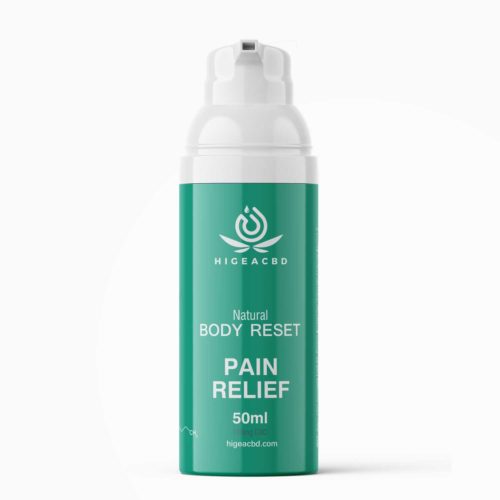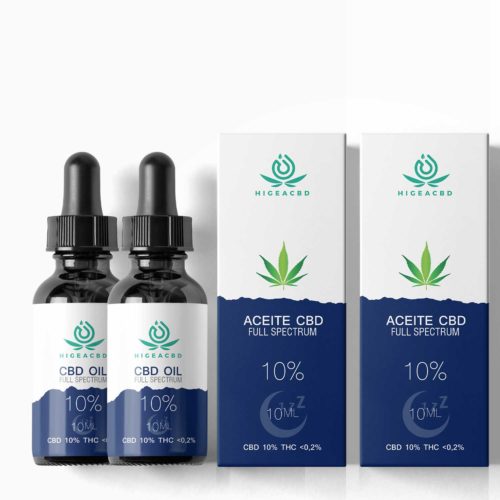Hemp in textiles
In this article we will talk about hemp in textiles, its properties, and the way these fabrics are made. The first thing you should know is that hemp fabric is a form of fabric made from fibres extracted from the stalks of the cannabis sativa plant.
For millennia, this plant has been known as a source of extremely strong and durable textile fibers. However, due to the psychoactive properties of cannabis, it has been difficult for farmers to cultivate this extremely valuable crop.
Showing 1–8 of 25 results
-
Sale!
Aceite Higea CBD 10%
29,95€ Add to cart -
Sale!
Hygea CBD Oil 20%.
49,90€ Add to cart -
Hygea CBD oil 30%.
89,95€ Add to cart -
Sale!
Aceite Higea CBD 5%
19,95€ Add to cart -
Higea CBD muscle pain cream 50 ml
21,95€ Add to cart -
Basic Pack
47,41€ Add to cart -
Medium pack
94,81€ Add to cart -
Sale!
Healing Balm Hygea CBD
19,95€ Add to cart
What you should know about hemp in textiles
Cannabis has been cultivated for two unique purposes for thousands of years. On the one hand, this plant has been selectively bred for many generations to be high in tetrahydrocannabinol(THC) and other intoxicating chemical ingredients known as cannabinoids.
Other growers have deliberately managed to reduce the levels of psychotropic THC produced by their crops, with the aim of producing stronger and superior fibres. As a result, two different strains of Cannabis sativa have evolved.
Hemp was previously thought to be made from the male Cannabis plant, while psychoactive marijuana is made from the female plant. This is a misconception.
In fact, female hemp plants account for the vast majority of hemp harvests worldwide. Female cannabis sativa plants grown for textile applications, on the other hand, have relatively low THC levels and lack prominent, sticky buds.
The stalks of the hemp plant are made up of two layers: the outer layer formed by bast fibres in the form of a rope, and the inner layer formed by woody pith. The outer layer of the cannabis stem is used for textiles. The inner, woody layer is typically used for fuel, building materials and animal bedding.

What are the properties of hemp?
Let’s talk now about the properties of hemp and its most distinctive features. Hemp fibre is easy to identify, as it has a dark coppery tone, which is very difficult to bleach. Despite this, hemp fibre can be dyed in dark, shimmering colours.
This hemp fiber is distinguished by being a lustrous fiber, with knots, joints, and a central channel that is particularly extensive. They change in length depending on their end use. Industrial hemp fibres, for example, are usually several inches long. On the other hand, the fibers used in textiles have a length of between ¾ to 1 inch.
The elongation of hemp fibres is low, as is their level of elasticity. One of the properties of textile hemp is that it resists moths, and has excellent heat capacity. As a result, hemp yarn provides superior insulation properties.
In addition to this, hemp fabric is biodegradable, stronger, more absorbent, and much more resistant to mold and mildew. It even has a higher insulating capacity than cotton fibre.
How is hemp yarn made?
The outer layer of bast fibres from the hemp plant are removed and the yarn is processed. Hemp yarn is famous for its strength, which has historically been the preferred material for rigging and sails on ships. Today, it is still considered a superior fabric for clothing, outperforming cotton and synthetic textiles in almost every respect.
However, because many global legislations do not distinguish between THC-rich marijuana and hemp that contains very little THC, the global economy does not reap the benefits of hemp to the extent that it could.
Instead, those unfamiliar with hemp label it as a narcotic. However, mainstream industrial hemp production is gaining ground in more countries. This indicates that the modern renaissance of hemp fabrics is approaching its peak.
It is worth noting that hemp has a similar texture to cotton when made into fabric, but it also has a canvas-like feel. Hemp fabric does not shrink and is very resistant to pilling. It is also distinguished by being very soft, yet quite durable. This is because the fibers of this plant are long and resistant.
While a normal cotton T-shirt lasts 10 years at most, a T-shirt made from hemp yarn can last twice, or three times that long. In fact, some claim that hemp fabric is three times stronger than cotton fabric.

How are hemp textiles made?
Hemp is a lightweight, breathable fabric and effectively allows perspiration to pass from the skin to the atmosphere. This makes it an excellent choice for hot climates. As mentioned above, it is easy to dye and is resistant to mold and potentially dangerous bacteria.
Hemp fabric softens with each wash and hemp fabric fibres do not disintegrate even after dozens of washes. It is ideal for clothing because it is reasonably easy to create responsibly.

Hemp cultivation
As a crop, hemp tends to grow well in temperate areas with high humidity. Cannabis plants are ready for harvest in North America in mid-August.
Most hemp plants are harvested with particular equipment and then left to rest in the field for 4-6 weeks. This allows the pectin to be removed naturally by exposure to the weather. It is a key aspect of hemp in textiles.
After that, the hemp stalks are made into hay bales and the fibrous outer section of the plant is separated from the woody core with shredders or a hammer mill. The separated bast fibres are then carded into strands and cleaned to remove any contaminants.
Manufacturers can use the pulp to make paper, or use steam explosion to convert raw hemp into a woven fibre. The hemp is ready to be made into yarn and woven into textiles once the steam explosion process is completed.
Hemp textiles are made using the same procedures that are used to manufacture other fabrics at this level. The yarn of this substance is woven into tightly woven fabrics that can be used for a variety of consumer applications.

What is hemp used for in textiles?
Hemp fabric is mainly used in clothing. This style of fabric was originally appreciated as a novelty item by those who were enthusiastic about cannabis. While hemp fabric remains popular in the cannabis community, many people now prefer it more for its properties, rather than its link to marijuana.
Dresses, skirts, trousers, jackets, T-shirts, hoodies and children’s clothing are examples of clothing made from textile hemp. Because it is resistant to wear and tear, this type of fabric is very popular for T-shirts.
Most cotton T-shirts begin to warp, shrink or fall apart after a few washes. This is not the case with hemp fibre T-shirts, which keep their shape and integrity for years.
Tablecloths, upholstery, cloths, and more
In addition, this fabric can be found in a variety of hemp textiles. Hemp fabric is increasingly used for tablecloths, upholstery and kitchen towels. Home textiles created from this substance are most popular among marijuana lovers. However, hemp cloth for tablecloths, upholstery and kitchen towels is also becoming more and more common among the regular consumer.
Due to its excellent absorbency and durability, hemp fabric is particularly popular for use in towels. While some consumers may prefer hemp sheets, one of the minor drawbacks of this fabric is that it is not as soft as high thread count cotton.
This means that sleeping with this fabric in direct contact with your skin can be uncomfortable. Hemp fiber, on the other hand, is extremely durable, making it an excellent choice for blankets and comforters.
While some hemp weaving purists prefer to use textiles that are made entirely of hemp, it is also popular to mix hemp yarn with other fabrics. Cotton and hemp blends, for example, are becoming increasingly popular, and this fabric is also often combined with silk.
The advantage of all this is that hemp can be softened while remaining strong by combining it with other fibres. It is also important to note that while the quality, feel and texture of this fabric may differ from one manufacturer to another, hemp fabric is manufactured using the same basic process around the world.
The end product is a hemp textile that is stronger than cotton, softer than canvas and more durable.
Related articles
CBD and contraceptives
CBD and contraceptives. We explain what they are, and which are the most common pregnancy prevention methods Enter!
Tantric exercises to improve your sexuality
Tantra is a complex and ancient practice with a wide range of techniques. Can be used to enhance sexual experiences
Gifts for people with anxiety
When it comes to selecting gifts for people with anxiety, it is important to keep in mind that everyone's experiences and coping mechanisms are different. However, in this article we share with you some gift ideas that can be beneficial for people with anxiety.What...
CBD for studying
Did you know that you can use CBD to study and improve your academic performance? Enter to find out how CBD helps you study better!
Is CBD oil safe during pregnancy and breastfeeding?
Pregnancy and breastfeeding are very delicate times for the health of mother and baby, so many substances are not compatible with the process. If this is your case and you are not sure about the effects that CBD oil can have on your body, you should know this...
What is Bisabolol, and what are its benefits?
Bisabolol, a cannabinoid that despite being little known, is known to have enormous medicinal potential Enter now!
Subscribe to our newsletter
Subscribe and receive a 10% discount on your purchase.
Store
Categories
Guides
Legal notice and privacy policy














